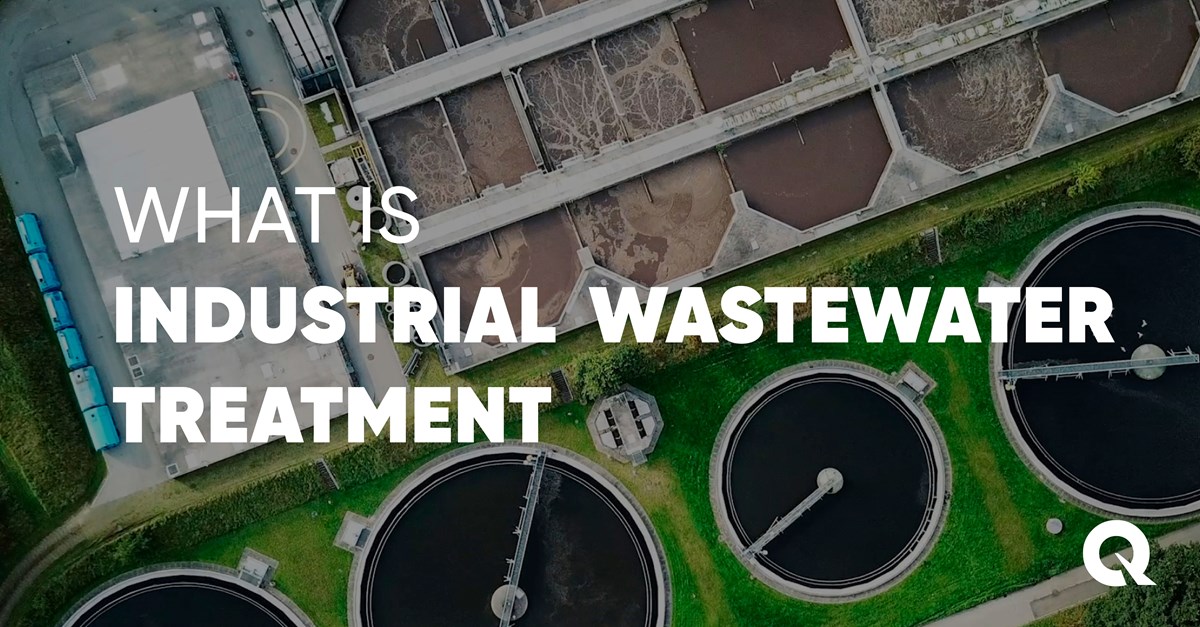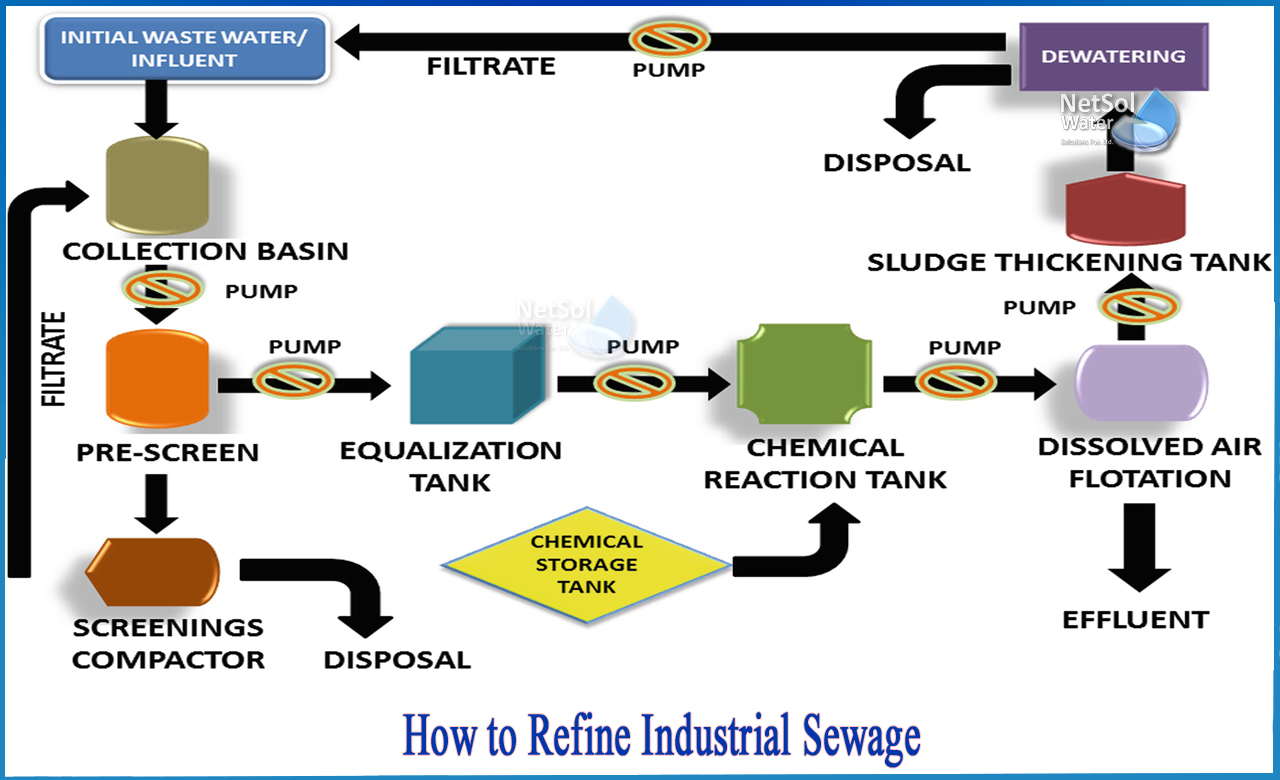Industrial Waste Water Treatment-- Improve Performance with Custom-made Water Treatment Systems
Industrial Waste Water Treatment-- Improve Performance with Custom-made Water Treatment Systems
Blog Article
Secret Methods in Industrial Waste Water Therapy Processes
The therapy of commercial wastewater is a crucial aspect of environmental monitoring, involving an array of techniques designed to alleviate the influence of impurities. Improvements in technologies such as membrane purification and advanced oxidation procedures offer ingenious options for boosting therapy efficiency.
Physical Treatment Techniques
Exactly how properly can physical therapy techniques address the intricacies of industrial wastewater? Physical treatment approaches play a crucial duty in the initial phases of wastewater administration, concentrating mostly on the elimination of solids and huge particulates. Techniques such as flotation, sedimentation, and purification are necessary for reducing the focus of suspended solids, thereby boosting the effectiveness of subsequent treatment processes.
Sedimentation includes the gravitational settling of solids, allowing for the splitting up of much heavier products from the wastewater. This technique is particularly effective in clearing up water prior to organic or chemical therapies.
Additionally, flotation protection approaches, which use air bubbles to lift suspended solids to the surface for elimination, work in dealing with wastewater with high focus of fats, oils, and greases. Overall, physical therapy techniques work as an essential initial action in the comprehensive monitoring of commercial wastewater, ensuring that the load on succeeding treatment stages is lessened and enhancing total therapy efficacy.
Chemical Therapy Methods
While physical therapy approaches prepared for efficient wastewater administration, chemical treatment strategies are important for resolving the more intricate contaminants usually located in commercial effluents. These approaches use different chemical representatives to speed up, neutralize, or oxidize hazardous compounds, guaranteeing an extra extensive elimination of pollutants.
One typical technique is coagulation and flocculation, where chemical coagulants such as light weight aluminum sulfate or ferric chloride are contributed to promote the aggregation of suspended fragments. This process improves solid-liquid separation, lowering turbidity and enhancing water top quality. Furthermore, neutralization processes are employed to change the pH of wastewater, making use of bases or acids to reduce the effects of acidic or alkaline streams, specifically.
Oxidation-reduction responses play an essential function in degrading organic impurities and virus. Chemical oxidants like chlorine, hydrogen, or ozone peroxide are used to break down complicated organic substances, making them less harmful or extra naturally degradable. Advanced oxidation processes (AOPs) combine several oxidation techniques to enhance toxin removal performance.
Organic Therapy Processes
The performance of wastewater therapy is considerably enhanced by biological therapy procedures, which harness the all-natural metabolic tasks of bacteria to decay raw material and remove toxins. Industrial Waste Water Treatment. These procedures mostly include aerobic and anaerobic food digestion, each tailored for certain kinds of wastewater
Cardiovascular therapy procedures use oxygen to support microbial development, advertising the breakdown of organic pollutants into carbon dioxide and water. Usual methods consist of activated sludge systems, where aeration storage tanks assist in the blending of wastewater with microorganisms, and dripping filters, which urge biofilm advancement on media surfaces.
On the other hand, anaerobic treatment procedures occur in the absence of oxygen, utilizing anaerobic bacteria to disintegrate organic matter, resulting in biogas production, an eco-friendly energy resource. Anaerobic digesters are commonly utilized in industrial setups for this function, efficiently minimizing the quantity of sludge while generating beneficial biogas.
The option of an organic therapy method relies on wastewater characteristics, treatment objectives, and governing requirements. The assimilation of biological processes in wastewater therapy not just improves contaminant removal efficiency yet likewise advertises sustainability by reducing chemical use and sustaining source recuperation.
Advanced Oxidation Processes

Usual AOP techniques include Fenton's photocatalysis, reagent, and ozonation. Fenton's reagent, a combination of hydrogen peroxide and ferrous iron, catalyzes the formation of hydroxyl radicals, making it efficient for treating wastewater containing phenolic substances and various other stubborn compounds. Ozonation uses ozone as a powerful oxidant, with the ability of deteriorating a vast array of natural toxins while all at once disinfecting the effluent. Photocatalysis utilizes light-activated drivers, such as titanium dioxide, to enhance oxidation reactions and get rid of pollutants.
AOPs use numerous benefits, consisting of decreased sludge manufacturing and the capability to deal with wastewater with high focus of organic toxins. Nonetheless, the implementation of AOPs needs cautious consideration of operational parameters and cost-effectiveness, making certain that these sophisticated methods are properly integrated into existing wastewater therapy systems.
Membrane Purification Technologies

Microfiltration is efficient for removing suspended solids and microorganisms, while ultrafiltration targets smaller sized organic molecules and viruses. Nanofiltration connects the space between ultrafiltration and turn around osmosis, properly getting rid of natural substances and divalent ions. Reverse osmosis gives the greatest level of filtration, utilized primarily for desalination and removing mono-valent ions.
Membrane layer innovations provide various benefits, including low power intake compared to typical therapy techniques, modular layout for scalability, and the capacity for water recovery and reuse. Challenges such as membrane fouling and the demand for regular upkeep must be addressed to guarantee system Visit This Link effectiveness. In general, membrane purification innovations represent an essential part of contemporary commercial wastewater treatment methods, promoting sustainability and source preservation in water management.
Verdict
In verdict, commercial wastewater treatment utilizes a varied selection of methods, including physical, chemical, biological, and advanced methods. Proceeded innovations in these approaches will additionally enhance the effectiveness and effectiveness of wastewater therapy procedures in commercial settings.
The therapy of industrial wastewater is an important facet of ecological management, including a variety of methods made to mitigate the influence of contaminants.How efficiently can physical treatment methods attend to the complexities of commercial wastewater?Advanced oxidation processes (AOPs) represent an innovative strategy in commercial wastewater therapy, designed to effectively degrade organic contaminants that are commonly immune to conventional treatment approaches (Industrial Waste Water Treatment).In verdict, commercial wastewater therapy employs a varied variety of strategies, consisting of physical, chemical, organic, and advanced methods. Continued innovations in these techniques will further enhance the effectiveness and efficiency of wastewater treatment processes in industrial setups
Report this page